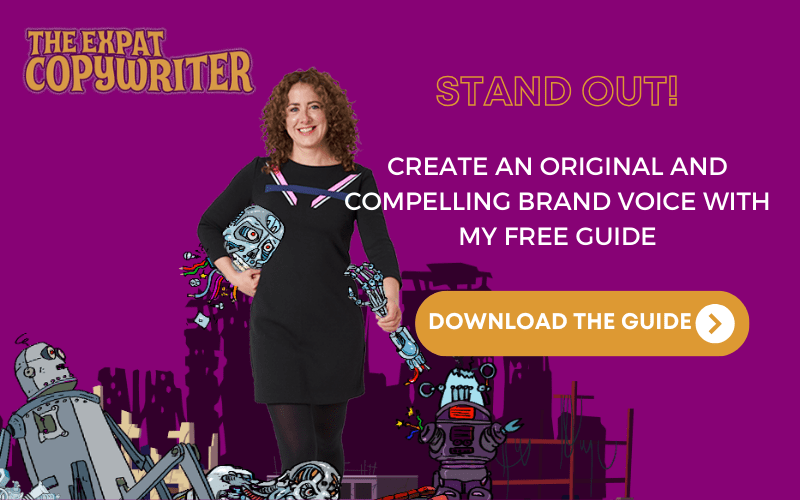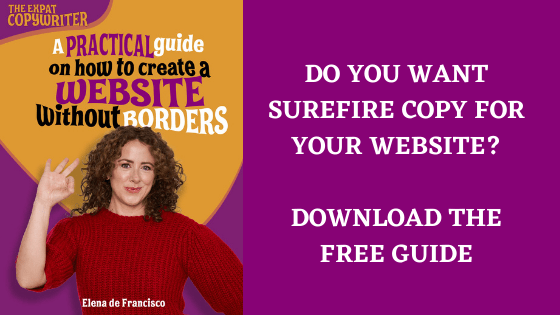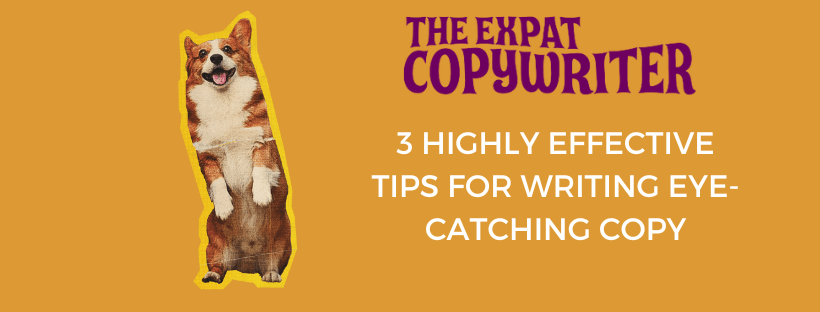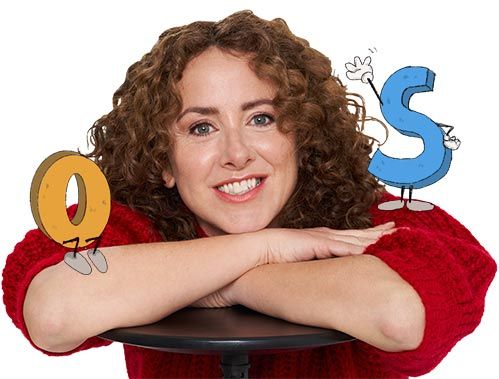We live in the age of ChatGPT and all use it for tasks as diverse as writing a CV, making a shopping list or creating a post on LinkedIn.
And yes, it’s great because it saves you a lot of time and gives you ideas that might otherwise be hard to come by.
But there are 2 not-so-positive aspects of using AI for everything:
1. We lose the habit of thinking and expressing ourselves in writing.
2. Our texts will look like everyone else’s.
But what are the real consequences of these 2 negative aspects?
Regarding the first aspect, I think it’s clear.
If we don’t have to work hard to come up with new ideas, our brains become lazy and lose their ability to create something original.
Human creativity is not only the driving force behind the world’s most beautiful works of art, but it’s also the reason why such revolutionary and important inventions as the aeroplane and the washing machine have come into our lives.
Creativity is important for mental well-being.
Humans need to create.
It doesn’t matter if it’s the lyrics of a song, a delicious meal or a wooden box for your bits and pieces.
Creating makes you feel good about yourself.
But let’s look at the second of the negative aspects, the one we’re going to focus on correcting in today’s copywriting lesson.
How can it affect you if something you’ve written using ChatGPT looks too much like what others are doing?
The answer is blunt: your text won’t help you stand out.
You can draw your own conclusions from this when we’re talking about a CV, a product page or a LinkedIn post.
In this copywriting lesson we’re going to learn how to turn a text written with ChatGPT into an eye-catching and memorable piece of copy.

Replace boring words with less common words
I know this goes against all the copywriting advice you’ve read a thousand times on the internet.
(Although if I were you, I’d only believe half or less of the advice people give on social media).
A lot of copywriters will tell you that it’s better to use common words that everyone uses, and that you need to write like you speak.
This is not entirely true.
A study found that the average 45-year-old knows the meaning of 30,000 words in their mother tongue.
On the other hand, the average person uses 300 words in everyday communication. 500 if they are highly educated.
We are not talking about the words a person knows, but the words they use in their everyday life.
This narrows down the possibilities considerably.
However, you don’t have to avoid using words that people don’t use every day.
What’s more, those words we understand but don’t use every day stay in our minds longer and make our brains pay more attention.
Because they are no longer background noise.
Let’s see some examples.
Isn’t it more memorable to say “shrewd” than “smart”?
Or “natter” rather than just “chat”?
Or “obstruct” rather than “complicate”?
There are so many words you could use that better describe a situation or a characteristic!
The better a word describes something the easier the reader will picture what they’re reading in their minds.
But we will dwell on this in the next section, because it’s crucial if you want to sell more online.
For now, I want to make this first point about making your sales copy more eye-catching and memorable very clear to you.
Just because your reader uses an average of 300 words a day doesn’t mean that they won’t appreciate or understand words that they don’t hear a thousand times a day.
In fact, the opposite is true.
Don’t you find that when someone repeats themselves too much, you stop listening?
That’s why I encourage you to let go of the fear these media gurus have instilled in you and use all the words you know or like and that you think best describe what you want to say.
Paint a vivid picture in the reader’s mind.
Selling online is not easy. Prospects can’t touch or smell your product.
Nor can you have a conversation with them -initially – to convince them that your service will solve their problem.
So you have to help them visualise themselves having your product in their hands.
Or, if you provide services, put all your arguments on the table to convince them that your service is what they need.
And to do this, you need to describe the transformation your prospects will experience: from where they are now to where they want to be, and how your product/service will help them get there faster.
It doesn’t matter if it’s a dress, a financial investment newsletter or a holiday in Kenya.
Most of the copy I see online fail to describe this transformation.
Because they just stay in generalities when it’s the details that matter.
What helps you imagine a scene better?
If I tell you: “Soak in your private jacuzzi”.
Or: “Soak in the perfectly tempered waters of your private jacuzzi, rest your neck on the soft edge, sip your favourite drink while listening to the exotic and evocative sounds of the jungle.
When could you better picture that extraordinary moment?
Don’t listen to what the copywriting gurus say on LinkedIn:
“Your copy should be short and crispy!”
The truth is that copy needs to be as concise as possible, yes, but without skimping on the details that will increase the reader’s desire to buy what you are describing.
And now you might be thinking, “well, a photo will do”.
Not always.
Let’s take the example of the jacuzzi.
You see a picture of a beautiful young woman smiling – as usual- as if she were having a sexual experience (how predictive some advertisers are 🙄).
This image won’t be as powerful as a well-crafted description of how your prospect will feel.
Seeing a picture of someone so different (and unreal) can make it harder to imagine yourself there.
But when you tell them the details of the experience they could be living, they will picture themselves perfectly in that jacuzzi.
Do you see what I mean?
If not, here is another example.
Have you ever watched a film based on a book you have read and been totally disappointed to see that the main character has nothing to do with the person you imagined?
You had imagined her in a completely different way from that actor whose acting skills make you cringe.
And you think to yourself, “Oh boy, they’ve screwed it up”.
You are not alone.
Science tells us that it’s much easier to identify with a character in a book than in a film.
There are several reasons for this, but the one that concerns us in this case is this:
A book focuses more on a character’s feelings and thoughts, so that we can feel what they are feeling, and this helps us to relate to them.
Whereas in a film you can’t help but look at the actor and focus more on their physicality and actions and less on their inner self, their essence.
I’m not saying that you can’t relate to a character in a film.
Of course, this is possible.
But it doesn’t happen as deeply as when you read a book.

If something is well written (and it could be a book, an article or a post on Instagram), you identify with it and make it your own.
You imagine the scenes, put a face to the characters and make the story your own.
That’s why you’re often disappointed by a film or a video because it’s not what you imagined and it doesn’t touch you as much because it’s not “your story”.
This is why you need to make an effort to paint the image you want to create in your prospects’ mind as well as you can.
Steal the voice of customers
This may sound a bit heavy, but I’ll make it clear right now.
The first thing I do when I start a copywriting project is spend hours (if not days) reading reviews, opinions, testimonials, interviews and anything else I can get my hands on with words spoken directly by customers who fit the profile of my buyer persona.
They can be your own customers but also those of your competition.
They are the ones who will give you the best clues about what benefits they crave, what drawbacks they see, what problems have been solved after the purchase, what could have been better.
Often you find real gems.
People who perfectly describe the transformation we talked about in the previous section and who will help you attract more customers.
Use their expressions, their examples, the way they describe their emotions.
Spend as much time as you can reading and listening to customer reviews because it’s the only way to find those gems.
Sometimes you have to read 40 reviews to find one that contains that perfect description of the person’s transformation, or that invaluable information you needed to differentiate your product or service from the competition.
Steal these expressions from your own customers and those of your competitors’ and use them in your copy.
To close
Don’t be afraid to write longer copy, or use uncommon words and focus on describing in vivid detail all the good that your product or service will bring to people’s lives.
ChatGPT is fine as a base, but if you want to stand out you have to turn that flat, repetitive information into something three-dimensional that transcends the screen and connects with all those people with attention deficits.
Go for it!
3 high effective tips for writing eye-catching copy #copywriting #copywritingtips Share on X


0 Comments